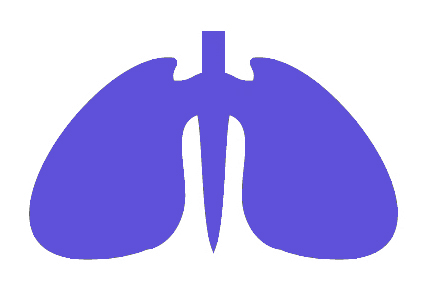Use a systematic approach based on ABCDE to assess and treat an acutely injured patient. Unless there are associated injuries, most patients with abdominal trauma generally present with a patent airway. Alterations found in breathing, circulation, and disability assessments generally correspond to the degree of shock. The goal is to manage any immediate threats to life and identify any emergent concerns that may require activation of retrieval services and early transfer to a MTS.

Airway with cervical spine protection
Assess for airway stability
Attempt to elicit a response from the patient. Look for signs of airway obstruction (use of accessory muscles, paradoxical chest movements, see-saw respirations). Listen for any upper-airway noises, breath sounds. Are they absent, diminished, or noisy? Noisy ventilations indicate a partial airway obstruction by either the tongue or foreign material.
Assess for soiled airway
Hemorrhage and vomiting are common causes of airway obstruction in trauma patients. These should be removed with suction.
Attempt simple airway maneuvers if required
- Open the airway using a chin lift and jaw thrust.
- Suction the airway if excessive secretions are noted or if the patient is unable to clear their airway independently.
- Insert an oropharyngeal airway (OPA) if required.
If the airway is obstructed, simple airway-opening maneuvers should be performed as described above. Care should be taken not to extend the cervical spine.
Caution: NPA should not be inserted in patients with a head injury in whom a base of skull fracture has not been excluded.10
Secure the airway if necessary (treat airway obstruction as a medical emergency)
Consider intubation early if there are any signs of:
- A decreased level of consciousness GCS <9, unprotected airway, uncooperative/combative patient leading to distress and further risk of injury
- Hypoventilation, hypoxia, or a pending airway obstruction: stridor, hoarse voice.
- Assist ventilation with a bag and mask while the provider is setting up for intubation.
Maintain full spinal precautions if indicated
Suspect spinal injuries in polytrauma patients, especially where there is an altered level of consciousness. Ensure cervical collar, head blocks, or in-line immobilization is maintained throughout patient care.

Breathing and ventilation
Patients with early, compensated shock may have a mild increase in their respiratory rate, however, those with more severe hypovolemic shock will display marked tachypnea.
Assess the chest
Count the patient’s respiration rate and note the depth and adequacy of their breathing. Auscultate the chest for breath sounds and assess for any wheeze, stridor, or decreased air entry. Be mindful that in the setting of abdominal trauma, potential thoracic injuries may have occurred also. Rupture of the hemidiaphragm often leads to compromise of respiratory function, and bowel sounds may be heard over the thorax when breath sounds are auscultated.
Record the oxygen saturation (SpO2)
Adequate oxygenation to the brain is an essential element in avoiding secondary brain injury. Monitor the SpO2 and maintain it above 95%. Failure to keep saturations above this rate is associated with poorer outcomes. Ensure high-flow oxygen is administered to maintain saturations above 95%.

Circulation with haemorrhage control
Assess circulation and perfusion
Check:
- Heart rate.
- Blood pressure.
- Peripheral circulation and skin (pale, cool, clammy).
Shock from intra-abdominal hemorrhage may range from mild tachycardia with few other findings to severe tachycardia, marked hypotension, and pale, cool, clammy skin. The most reliable indicator of intra-abdominal hemorrhage is the presence of hypovolemic shock from an unexplained source.
In immediate trauma care, aim for a blood pressure greater than 90 mmHg systolic or a shock index less than 1 (HR/SBP).
Insert x 2 large bore peripheral IV cannulas. If access is difficult, consider a central or intraosseous insertion if the equipment/skills are available.
Commence fluid resuscitation as indicated
Initial treatment of hypovolemia with crystalloid fluids (normal saline) is recommended, up to 20–30 mL/kg. Blood pressure goals for penetrating trauma or uncontrollable hemorrhage are generally lower than for blunt trauma in the absence of a major head injury. (SBP values less than 90 mmHg may be acceptable if cerebral perfusion is maintained – that is, if conscious state is normal).11 Early consultation about such patients is required.
Expose the chest/abdomen and look for any obvious signs of external bleeding from penetrating trauma. If found, use firm, direct compression to stem the bleeding and, if possible, apply compression bandaging circumferentially over the wounds. Be sure to monitor for any signs of uncontrollable hemorrhage. If a penetrating object is found in situ, do not remove it. Look for any obvious signs of bruising across the abdomen. A more thorough examination will take place in the secondary survey.
Perform a FAST scan
Consider the need for FAST if it is available and staff are trained in its use. FAST is more accurate than any physical examination finding for detecting intra-abdominal injury, as most are associated with hemorrhage into the peritoneal cavity.8 Any fluid in the trauma patient on US should be considered to be blood. The FAST scan in hemodynamically unstable patients should determine the need for laparotomy. A negative FAST in a hemodynamically unstable patient reliably excludes the abdomen as the source of instability.12 It is important to note that the FAST scan cannot be used to give a specific diagnosis, only to confirm the presence of blood, which may warrant operative investigation. If the patient’s hemodynamic status changes, FAST may be repeated. If the patient is hemodynamically stable and shows no signs of significant internal bleeding, then it may be delayed until the secondary survey.

Disability: Neurological status
Assess level of consciousness
Perform an initial Glasgow Coma Scale (best eye opening, motor response, and verbalization). Check pupil size and reactivity if the conscious state is altered.
Test blood sugar levels
Ensure that any alterations in level of consciousness are not related to a metabolic cause.

Exposure and environment
By the end of the primary survey, the patient should have been fully exposed to ensure no injuries posing an immediate life threat are missed. Consideration must be given to the patient’s age, gender, and culture when exposing them for a trauma examination. Exposure may need to be done sequentially, uncovering one body region at a time to maintain patient dignity.
Trauma patients are prone to hypothermia, so upon completion of the primary survey, they should be covered with dry, warm blankets. External warming devices may be required if the patient is even mildly hypothermic. All intravenous fluid or blood should be warmed prior to administration if a fluid warmer is available.
Emergency Laparotomy
Early consultation with Adult Retrieval Victoria when considering emergency laparotomy will allow for:
- Joint assessment of the clinical scenario.
- Discussion of the need for urgent transfer (and retrieval coordination).
- Discussion with an MTS regarding clinical priorities and options.
Indications for emergency laparotomy
- Haemodynamic instability systolic BP< 90mmHg with a positive FAST.
- Evidence of peritonitis (tenderness on palpation, involuntary guarding, and percussion tenderness).
- Traumatic diaphragmatic injury with herniation.
- Severe solid organ injury (e.g. kidney and spleen).
- Infarction due to post-traumatic occlusion of the blood supply.
- Mesenteric tear/s.
- Unexplained moderate to large amounts of intraperitoneal free fluid (200-≥500mls).
- Failed non-operative management.
It is essential that early contact is made with retrieval services once any of the above have been identified to initiate transfer to the MTS. Dependent on the availability of local resources and consultation with ARV, consideration should be given to the need for damage control surgery, haemostatic resuscitation, and permissive hypotension. These will be discussed in the Early Management section of the guideline.
Imaging
In the trauma patient, a primary series of x-rays should be performed:
- Chest: identifies haemothorax, pneumothorax, and pulmonary contusion.
- AP Pelvis: identify any pelvic fractures.
